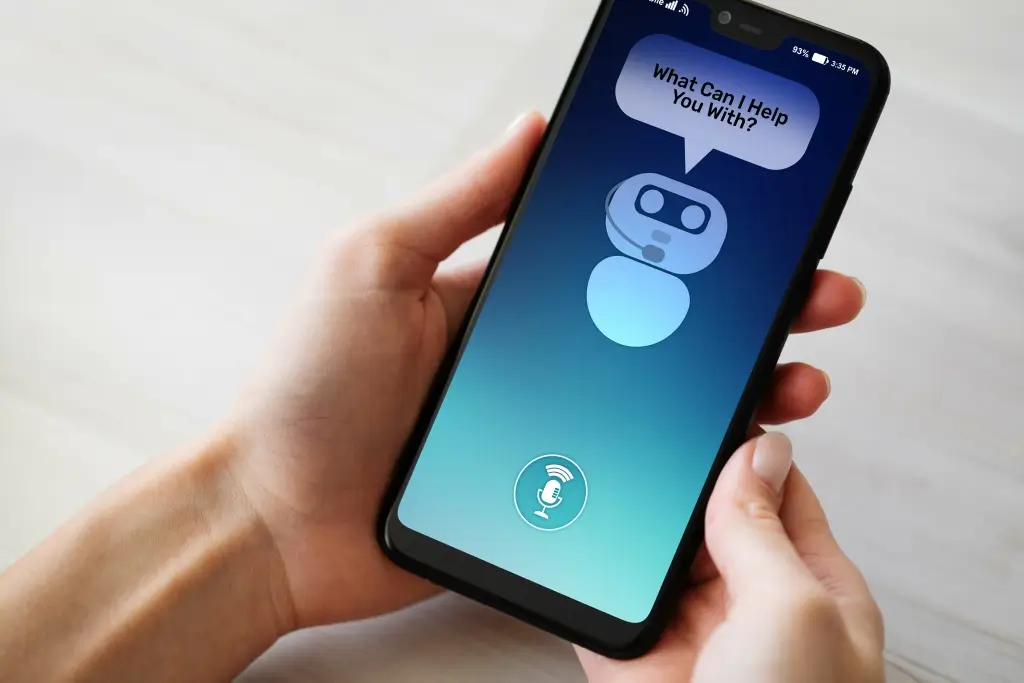The rise and fall in programming languages’ popularity since 2016 and what it tells us
For each language, the project is generated 3 times in order to evaluate the average result. You can foun additiona information about ai customer service and artificial intelligence and NLP. The prompt isn’t too complex, but challenging enough for the tools to be fully implemented correctly. The idea is that it will expose some imperfections in the implementations and potential differences in their severeness depending on the selected programming language. In one of my projects, I wanted to test this hypothesis with a clear comparison of the differences in the code quality generated by AI tools when the only difference is the programming language used. Choosing where to begin is like selecting a real-life language to learn. There are hundreds of languages spoken in the United States alone, and, similarly, there are hundreds of programming languages to choose from.
Throughout this exclusive training program, you’ll master Deep Learning, Machine Learning, and the programming languages required to excel in this domain and kick-start your career in Artificial Intelligence. It can generate human-like responses and engage in natural language conversations. It uses deep learning techniques to understand and generate coherent text, making it useful for customer support, chatbots, and virtual assistants. Put simply, AI systems work by merging large with intelligent, iterative processing algorithms. This combination allows AI to learn from patterns and features in the analyzed data.
Despite its ancient origin, the language has some amazing characteristics that are considered helpful in different fields. It is also used for therapy sessions in psychology and for spiritual remissions. But its recent involvement with artificial intelligence is an honor proving its power for being a valuable course of literature.
On the other hand, functional programming languages are built on the fundamental principle of functions as the core building blocks, which is essential to crafting clean and maintainable software. Go, or Golang is an open-source programming language that was developed by Google. It supports concurrent programming, which means that it will allow multiple processes to run simultaneously. A vast portion of Hyperledger’s chaincode built using Hyperedger Fabric for smart contracts are written in the Golang programming language. C/C++ is prioritised more by those who want to enhance their existing apps/projects with machine learning (20%) and less by those who hope to build new highly competitive apps based on machine learning (14%).
RTutor is a personal project of Dr. Steven Ge, a professor of bioinformatics at South Dakota State University. However, this time, it both generated Forth (the colons are dead giveaway) and labeled it appropriately. Like Scala above, ChatGPT didn’t seem to have the syntax coloring tables for Forth, but otherwise it seems to be doing fine. When I last ran these tests, almost a year ago, ChatGPT got almost everything right (notwithstanding the above disclaimer).
Best free AI chatbot for coding
All subscription tiers include a public code filter to reduce the risk of suggestions directly copying code from a public repository. Administrators can configure both features as needed based on your business use cases. The best Large Language Models (LLMs) for coding have been trained with code related data and are a new approach that developers are using to augment workflows to improve efficiency and productivity.
This section will further explore the critical factors to consider when selecting an iOS programming language. Selecting the appropriate iOS programming language entails considering a variety of factors including the project’s scope, complexity, and the expertise of the development team. It’s not a decision to be taken lightly, as the chosen language must align with both the app’s requirements and the strategic goals of the business.
Reprogram Your Career with an online Berkeley Coding Bootcamp
If you’re not using it for programming, Claude may be a better choice than the free version of ChatGPT. The other chatbots, including a few pitched as great for programming, each only passed one of my tests — and Microsoft’s Copilot didn’t pass any. If traffic is high or the servers are busy, the free ChatGPT will only make GPT-3.5 available to free users. The tool will only allow you a certain number of queries before it downgrades or shuts you off.
Tabnine has a free plan, but it can’t complete more than two or three words of code, and you get community support instead of direct support. The free plan is technically a trial, and pricing starts at $12 a month per user. Well, ChatGPT is still technically in beta, has no access to the internet, and knows ChatGPT no information after January 2022. Copilot is as good as ChatGPT as an AI text generator, because it uses the GPT-4 language model, but it also has access to the internet and current events. GitHub Copilot NightlyThis apparently just incorporates the latest bits for the GitHub Copilot tool described above.
While it’s true that AI can be a coder’s best friend, people should still learn how to program, no matter how much AI-generated code they end up using—for more than one reason. The significance of object-oriented programming lies in its ability to represent data and behavior through interconnected objects, enabling the construction of complex systems. You can become a software developer through undergraduate degrees, certificates, boot camps, online courses, self-study, and other resources like books and tutorials. Consider your learning style and the resources available to find the best path for you. JavaScript plays a fundamental role in web development by enabling interactive and sophisticated web applications through advanced client-side functions.
Here are two more programming languages you might find interesting or helpful, though I wouldn’t count them as top priorities for learning. The Fastai team is working on a Swift version of their popular library, and we’re promised lots of further optimizations in generating and running models with moving a lot of tensor smarts into the LLVM compiler. Not really, but it may indeed point the way to the next generation of deep learning development, so you should definitely investigate what’s going on with Swift.
NLTK is a highly versatile library, and it helps you create complex NLP functions. It provides you with a large set of algorithms to choose from for any particular problem. NLTK supports various languages, as well as named entities for multi language. Go has been compared to scripting languages like Python in its ability to satisfy many common programming needs. Some of this functionality is built into the language itself, such as goroutines for concurrency and threadlike behavior, while additional capabilities are available in Go standard library packages, like Go’s http package. Like Python, Go provides automatic memory management capabilities including garbage collection.
It stands out in the realm of database management where writing complex SQL queries can be a daunting task for non-technical individuals and even some developers. By converting natural language into SQL, AI2sql eliminates the need for in-depth knowledge of SQL syntax, making database interaction best programing language for ai more accessible to a broader audience. AskCodi is a developer’s tool packed with features like Time Complexity insights, code generators, and auto-test creators. It also boasts documentation tools and a unique autocomplete function for quick coding within various editors.
Qiskit (Open-source Programming Tool)
SpaCy enables developers to create applications that can process and understand huge volumes of text. The Python library is often used to build natural language understanding systems and information extraction systems. Go is meant to be simple to learn, straightforward to work with, and easy to read by other developers.
A brilliant way to answer these critics would be an initial launch of software or at least a research program devoted to the cause. Yet, this is another reason why Sanskrit seems more suitable than other languages. The strict grammar rules, syllables, ChatGPT App and words have reduced ambiguity making the literal meaning word and sentence. This definitely reduces the percentage of abstract meanings in the language. Thanks, You made it to the end of the article … Good luck with your R Programming journey!
AI Business Integration: Key Strategies for Seamless Implementation
The rationale behind these authors is based on language that had been developed primarily to form logical relations with scientific precision. This means that a logical relationship in the context of scientific precision can be easily developed with Sanskrit. NASA had been researching over this matter from longer than two decades. The outcomes favor the integration of a language that can be converted into machine computing to enhance Artificial Intelligence efficiency. Sanskrit has always been an important language in intellectual communities.
How Good Is ChatGPT at Coding, Really? – IEEE Spectrum
How Good Is ChatGPT at Coding, Really?.
Posted: Sat, 06 Jul 2024 07:00:00 GMT [source]
The lesson to be drawn is that Go adds major features rarely and only after much consideration, the better to preserve broad compatibility across versions. Go is designed to err on the side of being small and easy to understand, with certain features deliberately omitted. The result is that some features that are commonplace in other languages simply aren’t available in Go—on purpose. Unlike scripting languages such as Python, Go code compiles to a fast-running native binary. And unlike C or C++, Go compiles extremely fast—fast enough to make working with Go feel more like working with a scripting language than a compiled language.
The programming language has led to the creation of various other languages like Python, Julia, and Java. It also has the capability to code, compile, and run code in more than 30 programming languages. LISP is considered a highly efficient and flexible machine learning language for solving specifics since it adapts to the solution a programmer is coding for, which makes it stand out from some of the other top languages. Closing out our list of the 5 best machine learning (AI) programming languages is LISP, which is the second oldest programming language still in use today. Advanced learning opportunities are available for those who wish to further hone their skills.
- Choosing a suboptimal language for a project can be costly in terms of time, efficiency, and productivity.
- Understanding iPhone app development languages and their benefits can significantly enhance your iOS app development process.
- Since it is one of the fastest growing programming languages in the world, the number of Python developers and development services has exploded.
- In the field of machine learning, a machine learning specialist doesn’t have to write out all the steps necessary to solve a problem because the computer is capable of “learning” by analyzing patterns within the data.
Needless to say, Artificial Intelligence is the future of our technology. But this does come with a lot of criticism, research, and arguments about how to develop the most suitable computer language to upgrade the existing level of Artificial intelligence. Compiled languages also took the top five slots for least amount of memory space used. And even on individual benchmark tests, there are cases where fast-performing languages are not the most energy efficient. Interestingly, interpreted languages showed a slightly higher variation, with the CPU sometimes consuming as much as 92.90 percent of the power or as little as 81.57 percent.
It supports integration with NumPy and can be used with a graphics processing unit (GPU) insead of a central processing unit (CPU), which results in data-intensive computations 140 times faster. Julia is a high-performance programming language that is focused on numerical computing, which makes it a good fit in the math-heavy world of AI. While it’s not all that popular as a language choice right now, wrappers like TensorFlow.jl and Mocha (heavily influenced by Caffe) provide good deep learning support. If you don’t mind the relatively small ecosystem, and you want to benefit from Julia’s focus on making high-performance calculations easy and swift, then Julia is probably worth a look. Another one of the most well-known programming languages for machine learning, Java has a strong hold over the industry. It is especially popular among machine learning engineers who have a Java development background since they don’t need to learn a new programming language like Python or R to implement machine learning models.
The course starts with the installation of R and RStudio and then explains R and ggplot skills as they are needed when you progress toward an understanding of linear regression. A smart contract is a self-executing contract where the terms of the agreement between the buyer and the seller are directly written into lines of code. The code and the agreements are contained therein exist over a distributed, decentralized blockchain network.
For Python developers, Wing Python IDE Pro offers an integrated development environment. It provides intelligent code suggestions, debugging features, and code analysis tools to speed up development. It is an AI-powered code generator that writes code specifically for web development jobs.
Libraries like OpenCV and Pillow provide tools for manipulating and analyzing images in Python. A simple audio player application written in Python using the PyDub library. Odoo is a well-rounded management software that offers numerous business applications that constitute a complete set of enterprise management applications.
For example, Ruby was software engineer Dillon Kearns’ first love, but then the functional programming language Elm entered the picture. AI applications in healthcare include disease diagnosis, medical imaging analysis, drug discovery, personalized medicine, and patient monitoring. AI can assist in identifying patterns in medical data and provide insights for better diagnosis and treatment. Robots equipped with AI algorithms can perform complex tasks in manufacturing, healthcare, logistics, and exploration. They can adapt to changing environments, learn from experience, and collaborate with humans.



